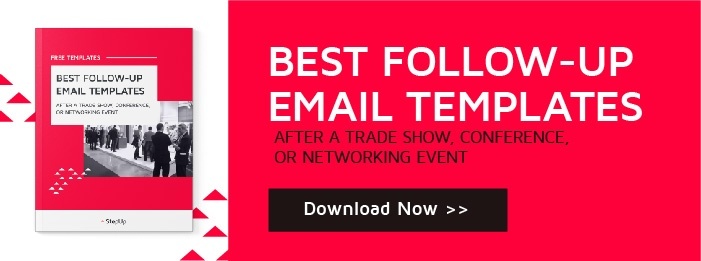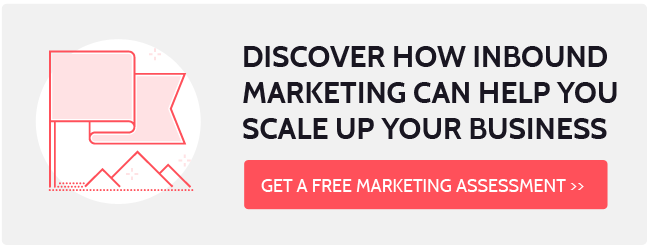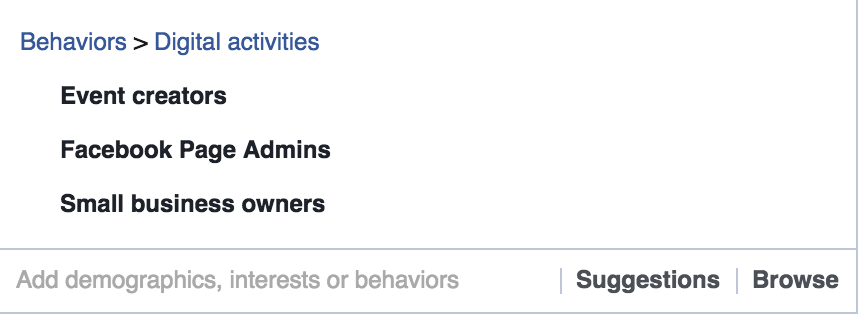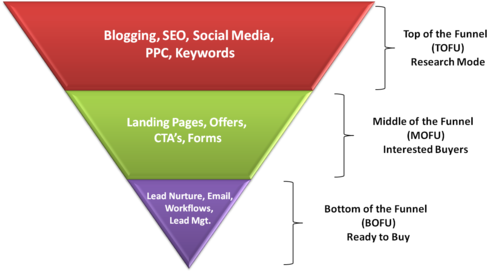In the past, blogs were considered a rarity within the business world – very niche specific, without much value. Now, this is no longer true – blogging for business has evolved to be the main staple in most business marketing strategies and more specifically, within any inbound marketing strategy.
While blogging can take some time and may even seem slightly daunting, the advantages of having a blog for your business are numerous and hard to ignore.

Business Blogging Defined
First, it’s important to note that business blogging looks different than other forms of blogging. Perhaps you choose to blog in your free time, or maybe you’re a frequent reader of travel blogs, that’s all great. But with business blogs, you must keep in mind that its main purpose is to be part of a strategic marketing plan.
The length of posts can range drastically, yet what’s important is that you treat the blog as a part of your company’s website, and keep the subject of posts relevant to what you are selling or providing.
The goal of the blog should be to increase online visibility, whether that is through SEO or social media. Use your company’s expertise to share insights of real value with potential customers. Ensure that posts are speaking to your client’s challenges, holding their interest and proving to them that you are established within your specific industry. Showing them the value that your company has to offer simultaneously promotes your service or product, prompting traffic to be converted into leads.
Why Blog?
In 2017, a blog for your business has more to offer than ever before. The overhead is low, and the benefits are high. Consider this:
- Companies that blog have 97% more inbound links
- 82% of consumers enjoy reading relevant content from brands
- Websites with a blog have 434% more indexed pages
- 77% of internet users admit to using blogs
Here are five best reasons why we believe blogging for your business is a must:
#1. Business Blogging Drives Traffic
This was briefly mentioned above but is important enough to really dig into. Specifically, with Inbound Marketing, driving traffic (instead of being annoying/distracting) truly is key.
Make sure to view your blog as an extension of your website. Hopefully, your website has been kept simple and doesn’t have a lot of pages, yet most likely isn’t updated as frequently as a blog would be updated. Which is perfectly fine, because blog posts are basically just indexed pages on your website.
A statistic from Hubspot notes that 78% of internet users are turning to the internet to do their product research. With frequent blog posts addressing the concerns of your potential consumers, the odds of them stumbling upon those indexed pages are high.
With every blog that you write and post, you are increasing your chances of:
- Showing up in search engines (driving traffic)
- Increasing your social media presence with your current audience/followers
- Expanding the potential of being discovered via social media by new potential leads
Think of it this way – with each blog post you are publishing, you are increasing the odds that your audience will be sharing and re-sharing this post to others. It’s a simple way to build on free marketing, while also building credibility.
All the above examples are working towards your end goal of driving more traffic, resulting in more potential leads. Which brings us to our second reason.
#2. Blogging & Building Leads
In short, having a blog for your business is going to generate more leads, it’s as simple as that. The traffic that we mentioned above, some of it is looking specifically for your product or service, and therefore are well-positioned to be converted into leads once discovering your blog. When it comes to converting those leads, the use of ‘call to action’ opportunities within the blog are crucial.
Blogs are a GREAT opportunity to utilize CTA’s. Some simple CTA’s to consider adding to blog posts can range from free fact sheets, webinars, training, even an e-book; any simple value-add that encourages a visitor to exchange their contact information. Without a CTA, it may be little more challenging to ensure that you’re turning blog traffic into leads.
Part of turning your traffic into leads is also developing that relationship. The language or tone that your blog uses may help to connect more with your audience than your actual website does. When writing posts, consider asking questions towards the end to promote comments from your readers; which also will give you a view into the kind of traffic you are seeing come through your blog, and what kind of solutions they may be seeking out.
Along with building relationships with your traffic and/or potential leads comes the perk of also building trust. Or in other words, credibility.
#3. Creating Credibility
Stemming directly from the concept of building relationships through your blog now comes the concept of establishing yourself as a credible source of information to your audience; one of authority. The more that you are able to interact with your prospects and answer their questions, the more quickly you can build up that authority.
Perhaps there is confusion around a certain issue, or a visitor is unsure of how to solve a particular problem. If an existing blog post of yours is able to answer a question or solve that problem, you’re able to quickly (and easily) build up that credibility with a visitor, simultaneously increasing the chances of turning them into a lead.
It makes sense; if you’re able to organically utilize a blog to answer questions, the chances of your audience then trusting you and being willing to enter the sales process will be much higher than without. Not to mention the fact that your leads are coming to you more educated because of that blog, which may enable them to actually move through the sales process more quickly than those being established from ground zero.
At the end of the day, you should be striving to create a blog that establishes yourself as the “go-to” resource when it comes to your industry. Provide educational, easy-to-digest knowledge for your blog traffic, and you will build leads that trust you – leading to higher customer conversion rates. It’s as simple as that.
#4. Connecting With Clients
A business blog is also a great tool to genuinely connect with your customers, and communicate with one another. Focus on posting content that addresses issues or pain points that they have (and that you can solve), or use posts to further explore areas that may also be of interest to your audience.
It can be a great resource to test new ideas and thoughts on different solutions or products, by posting and then seeing how your audience directly responds. Using the “comment” feature at the bottom of a blog post is a must; end posts by encouraging your readers to respond to it with their thoughts or questions, and then use that direct feedback as some navigation as your business continues to move forward.
Perhaps your readers are choosing to reach out and comment on challenges that you had never even considered before. Just like the use of social media, blogs can be a great opportunity to then use that information that is freely given to you, and explore ideas within your own business, so that you can possibly offer solutions around those pain points being voiced while growing your business over time.
#5. In it for the Long-Haul
The last thing to consider when it comes to blogging for your business is that blog posts can help grow your business, forever. If you are writing relevant content for your readers to absorb and utilize, your blog posts will continue to bring traffic to your website for years to come.
Think about it. Once you share a new blog post, the hope is that it gets shared, reshared, read through emails being sent out, social media, and so on. This helps your blog to get ranked in search engines and then sets you up to be found in the future – for the weeks and months to come.
So essentially we are suggesting that a blog is not only a short-term but a long-term investment. As long as posts contain a value, they will continue to offer value as long as they continue to exist out there on the world wide web. Be patient, don’t always expect immediate results, and trust that traffic (and leads) will continue to flow in from your blog, over time.
Hubspot – our marketing platform – actually reported that 70% of their blog traffic per month actually comes from posts that weren’t even published during that month. The traffic came from old posts. Old posts, with great value.
It’s Time to Blog for Your Business
When it comes to building your business, blogging can be an extremely relevant, helpful tool, without having to put excessive amounts of time and effort into it. And the best part is, if you don’t know where to start, there are plenty of resources out there to help you launch your business blog and get it underway.
Questions? Comments? Want some help with starting a blog – or your entire marketing campaign? Get in touch with us today!
















 > Download our free guide for more tips on lead generation for your company.”/>
> Download our free guide for more tips on lead generation for your company.”/>

